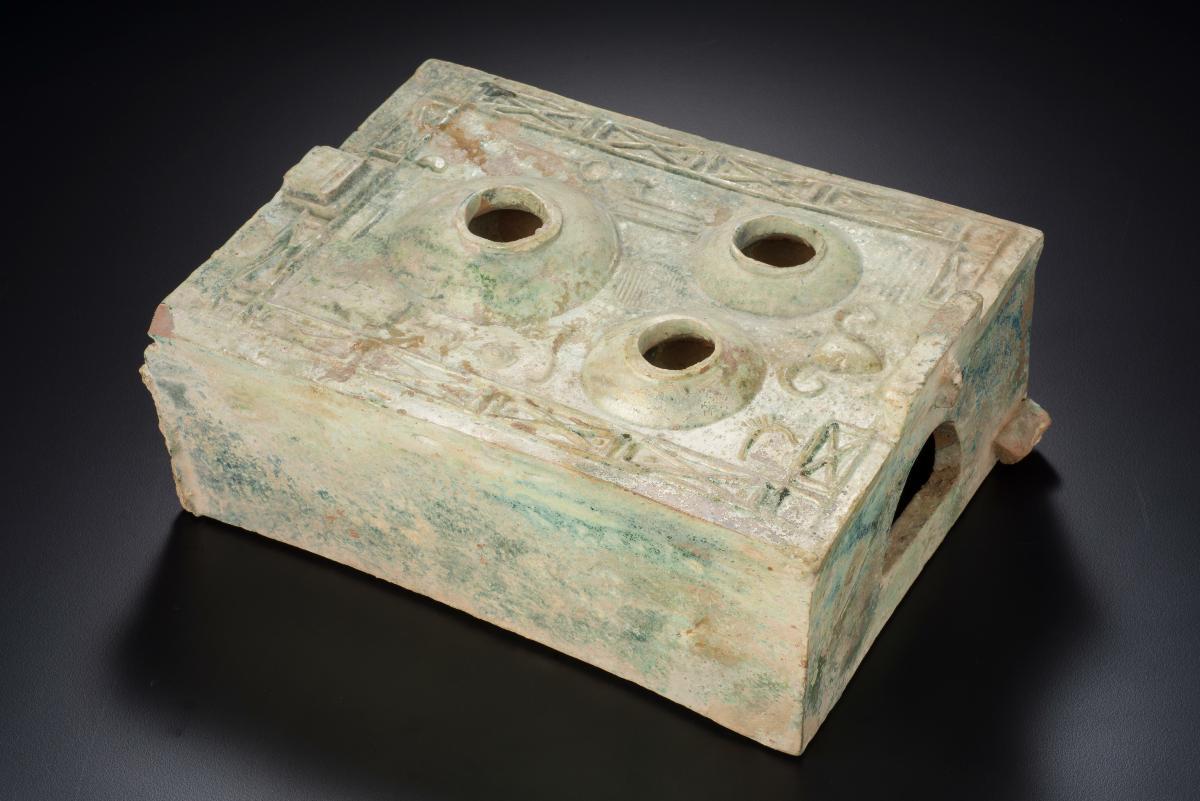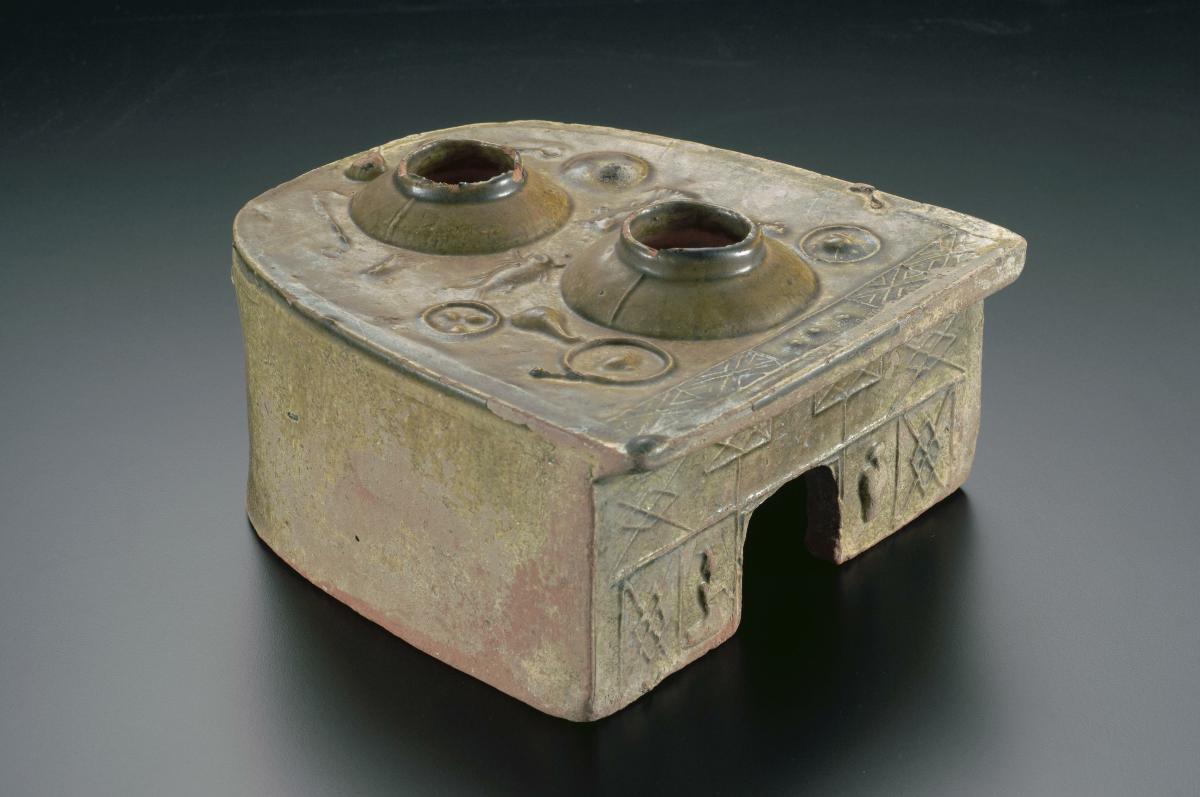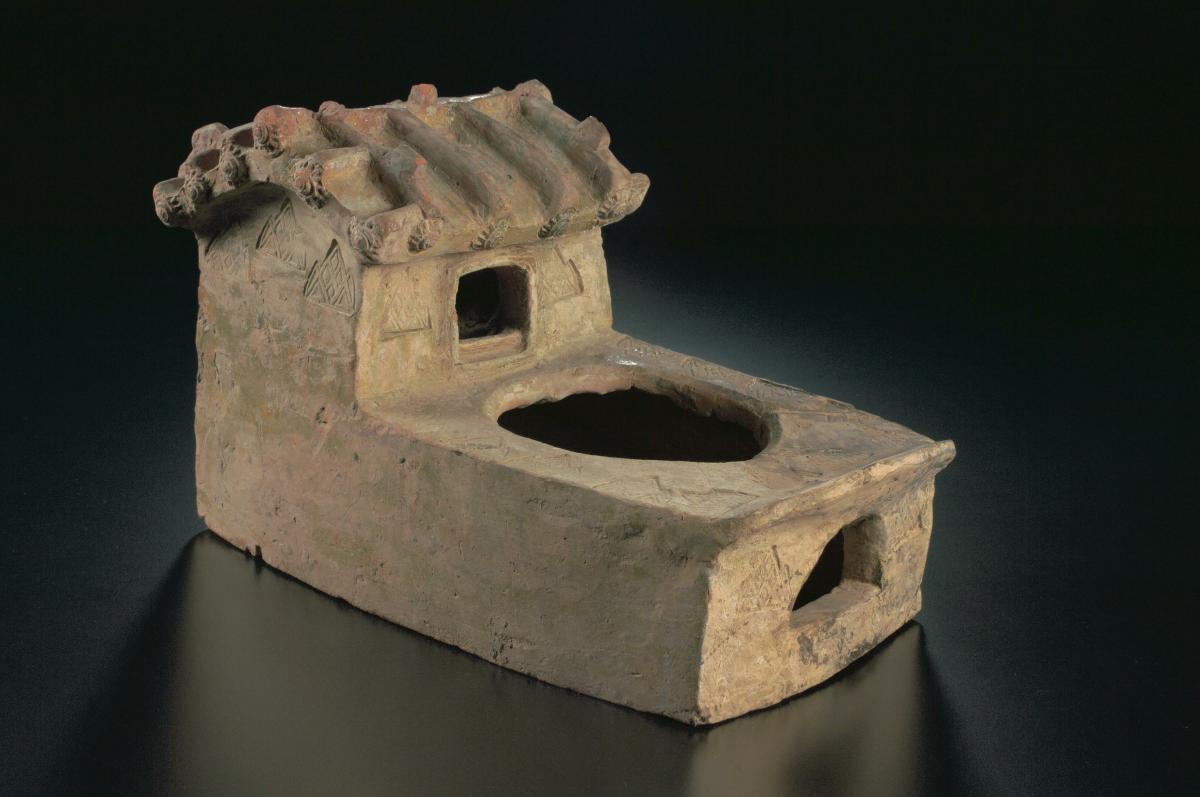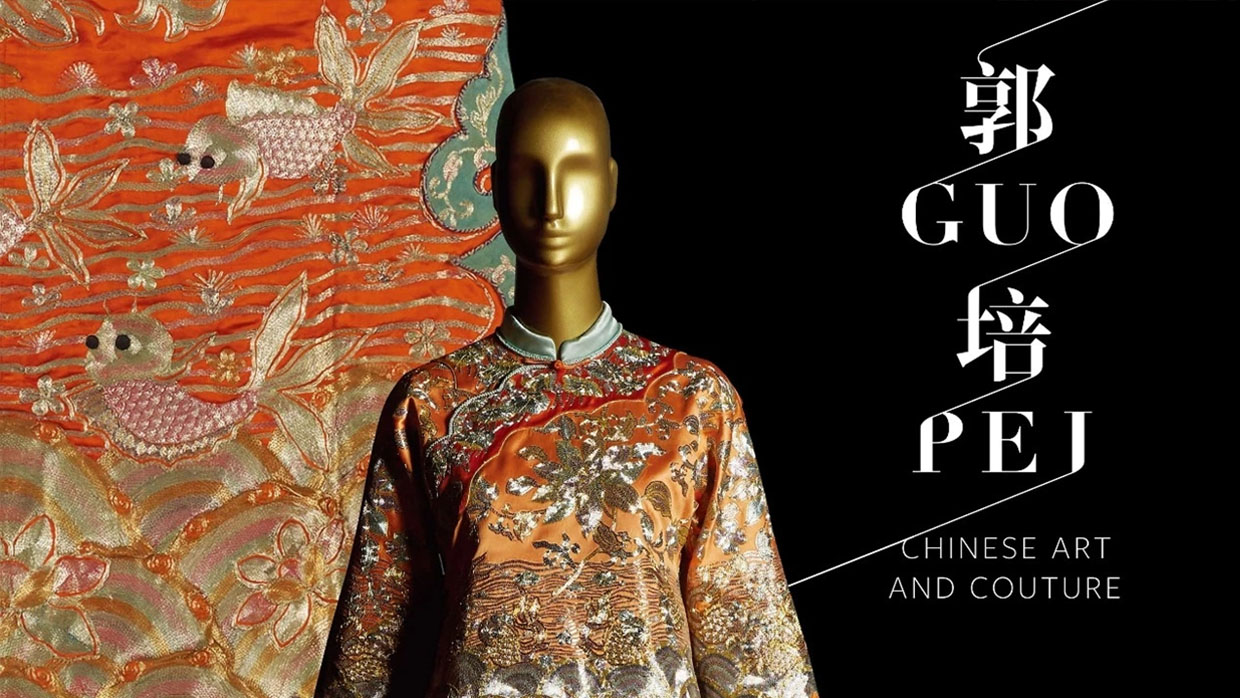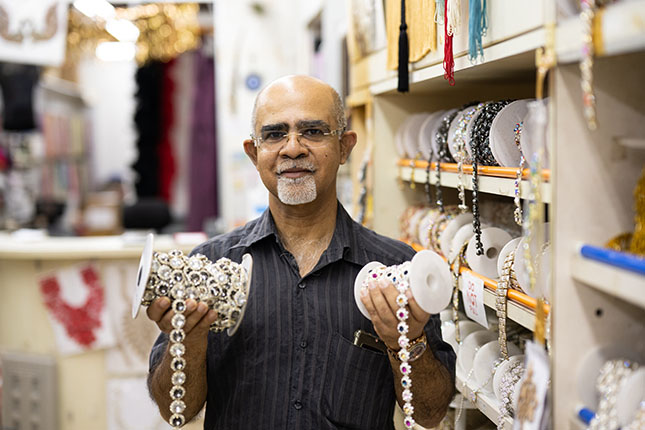This rectangular stove model with an iridescent green glaze served as a burial ware or ‘mingqi’. Three circular cooking pots are moulded onto the stove top, which is framed by a decorative border with X-shaped pattern band. The stove's front has a semi-circular opening that leads to the fire chamber. The practice of using lead-glazed burial wares had already started during the Han dynasty (206 BCE-220 CE) and it continued into the Ming period. The custom of burying objects with the deceased stems from the belief in life after death. Burying the stove ensured the deceased could continue ‘life’ in the underworld and served as a proof of his or her identity to underworld officials.




